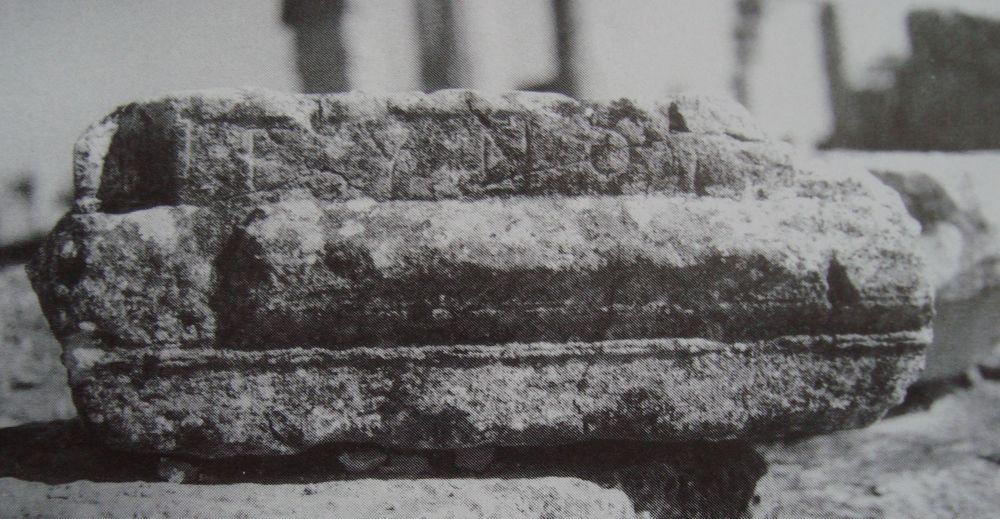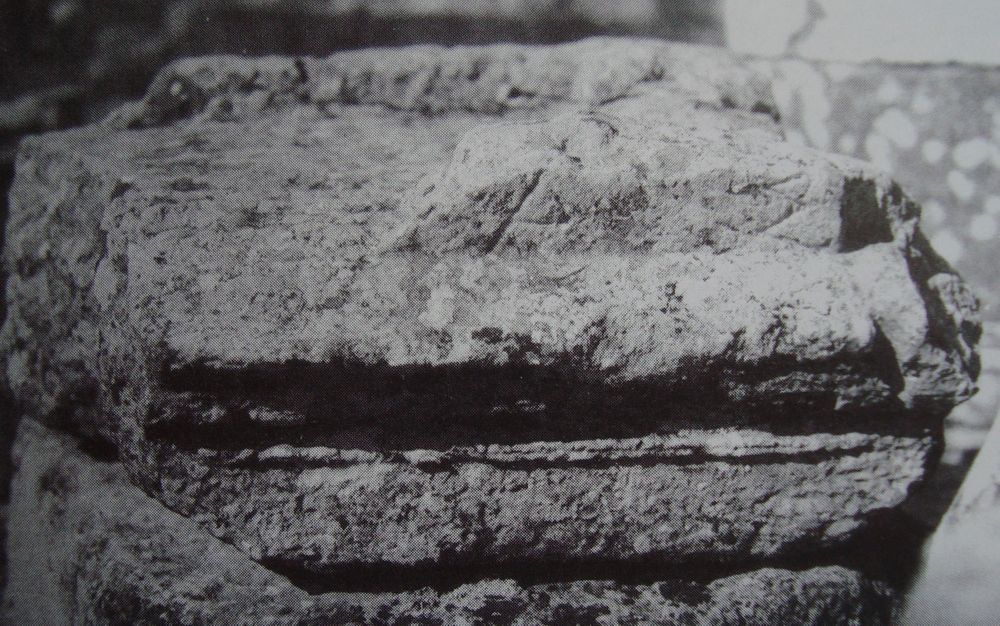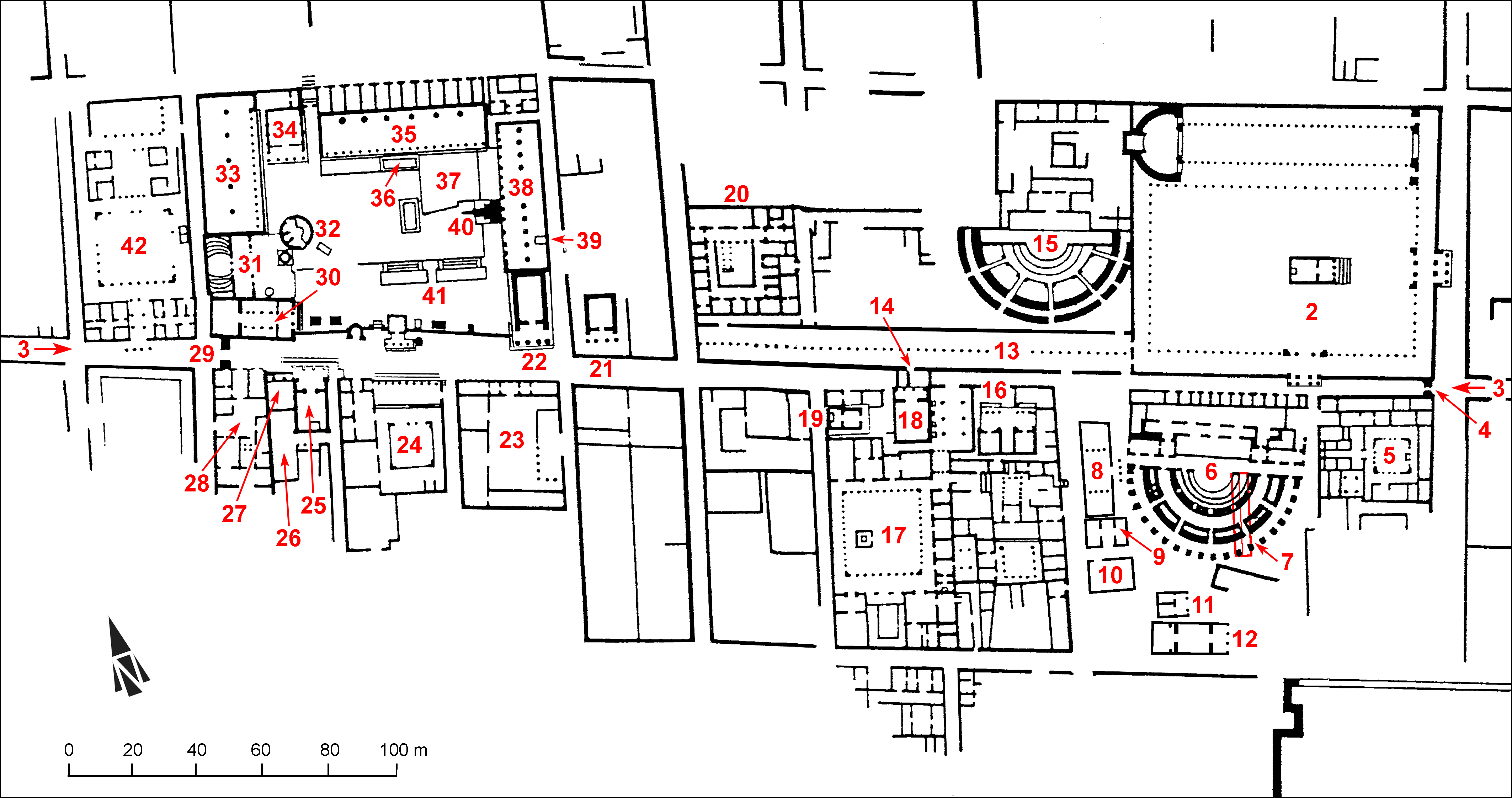EpiDoc XML:
IGCyr0838002
Trismegistos ID:
738392
Source description
Support: Fragment of a limestone rectangular altar with mouldings below and above and at least one compartment in the upper face (dimensions of base w: 1.5 × d: 0.8; restored width of inscribed area 1.02.
Layout: Inscribed on two opposite sides of the upper moulding (a and b).
Letters: Side a: 0.046, one letter plus space 0.9; side b: 0.045, one letter plus space 0.145; slantering sigma.
Date: Probably between 260 and 250 BC (Rosamilia) (lettering, archaeological context).
Findspot: Found in 1916 at Cyrene ➚: agora, South of the Temple of Demeter and Kore.
Place of origin: Findspot.
Last recorded location: Studied by G. Paci before 1995 in situ, on the agora. Not seen by IGCyr team.
Text constituted from: Transcription from previous editor.
Bibliography
Bacchielli 1995, pp. 130-132 (ph.), whence SEG, 45.2169; Bacchielli 1995 b, pp. 243-244 (= Bacchielli 2002, pp. 123-124, pl. XXX, 2); IGCyr 083800 ➚.
Cf. Rosamilia 2023, p. 326, number 67 (text).
Text
Apparatus
b.1: [c. 6]ας: [Εἰράν?]ας Rosamilia 2023; [Εἰρήν?]ας Bacchielli 1995
French translation
a) (scil. Autel) d'Eunomia [et de Dika?].
b) (scil. Autel) de [c. 6]a.
English translation
a) (scil. Altar) of Eunomia [and of Dika?].
b) (scil. Altar) of [c. 6]a.
Italian translation
a) (scil. Altare) d'Eunomia [e di Dika?].
b) (scil. Altare) di [c. 6]a.
Commentary
The altar was first mentioned by Oliverio 1931, p. 21, who spoke of «altari (uno dedicato alla Benevolenza)»; Stucchi 1984, p. 854 followed Oliverio's implicit restoration when speaking of «l'ara di Eunoia». However Bacchielli gave for the first time photographs and added an epigraphic analysis by G. Paci. The latter argued that what remains of the last preserved letter, being slightly oblique, is no iota but a mu. Hence the restored name of Eunomia.
The lettering may be dated widely in the third century BC; the archaeological context for the displacement of the Demeter and Kore sanctuary of the agora from the Western side towards the middle of the piazza dates of the middle of the century. Bacchielli links it more precisely with the marriage of Berenice with Ptolemy III and argues that after the troubles following Magas' death this event was the occasion of developing the cult of Demeter as the marriage goddess and jointly that of Eunomia ('Good Order') with possibly Dike and/or Eirene, all three daughters of Themis. Rosamilia 2023 suggests a slightly earlier date because the date of Magas' death is now placed about 260 BC. The placement of two names on one side and one name on the opposite side is linked to the dimensions of the missing part and to the different spacing of the letters on both sides. In spite of some good arguments, we prefer to leave the third name open, as it would be fully restored.
Anyhow the altar seems to have been shared by three goddesses, a fact that is paralleled at Cyrene, but for the fact that in the other known examples all the names are written on one and the same side of the altars, which rest against another building. The difference here would be due to the place of the altar, that was to be seen from either of its two long sides.
CC BY-NC-SA 4.0 Deed Attribution-NonCommercial-ShareAlike 4.0 International License.
All citation, reuse or distribution of this work must contain a link back to DOI: https://doi.org/10.60760/unibo/igcyrgvcyr2 and the filename (IGCyr000000 or GVCyr000), as well as the year of consultation.



